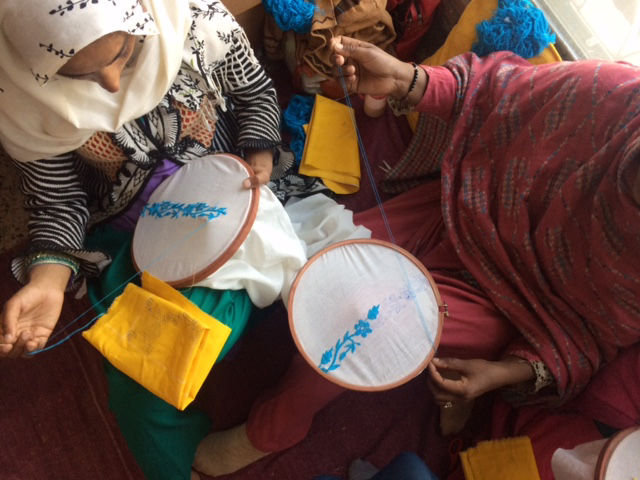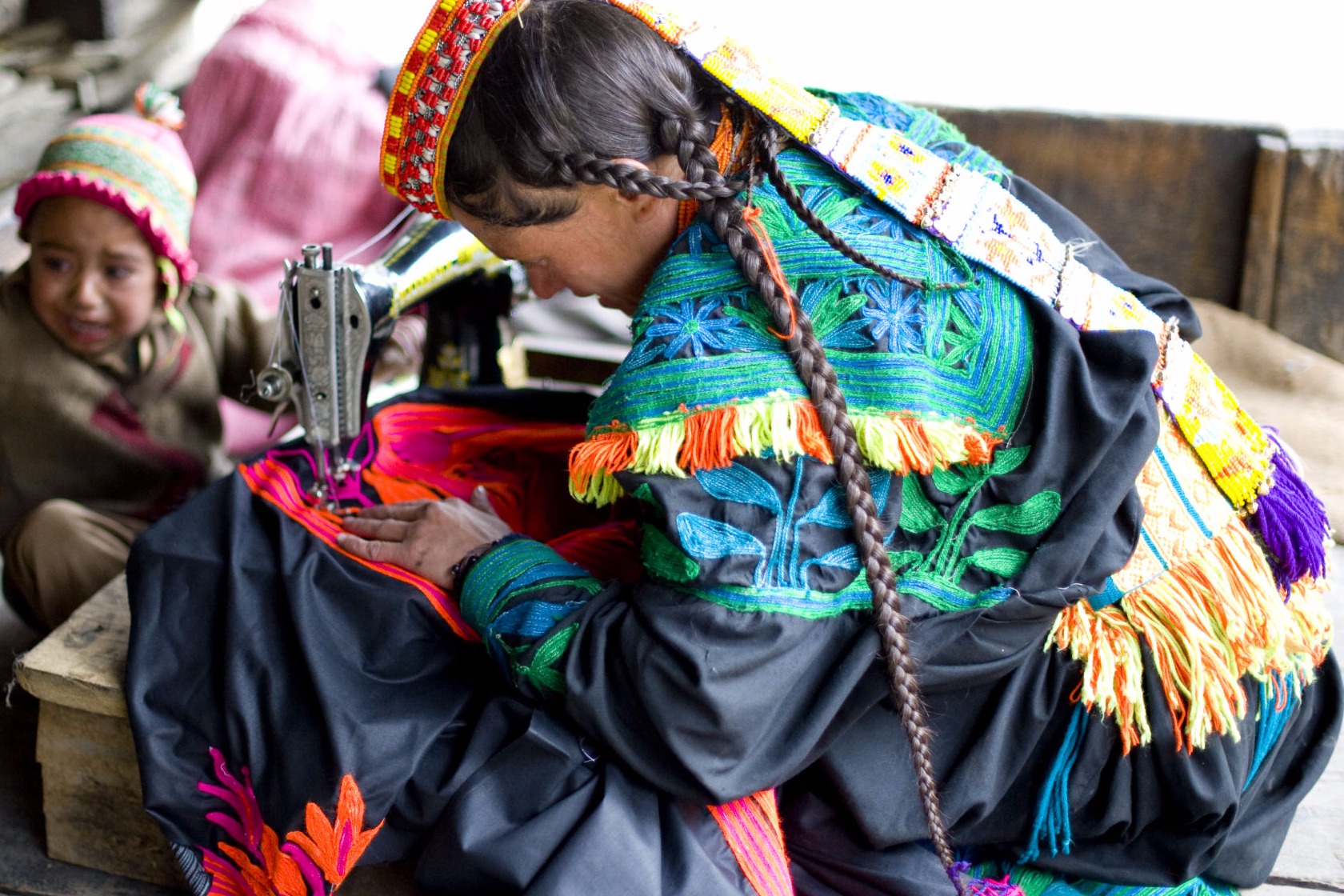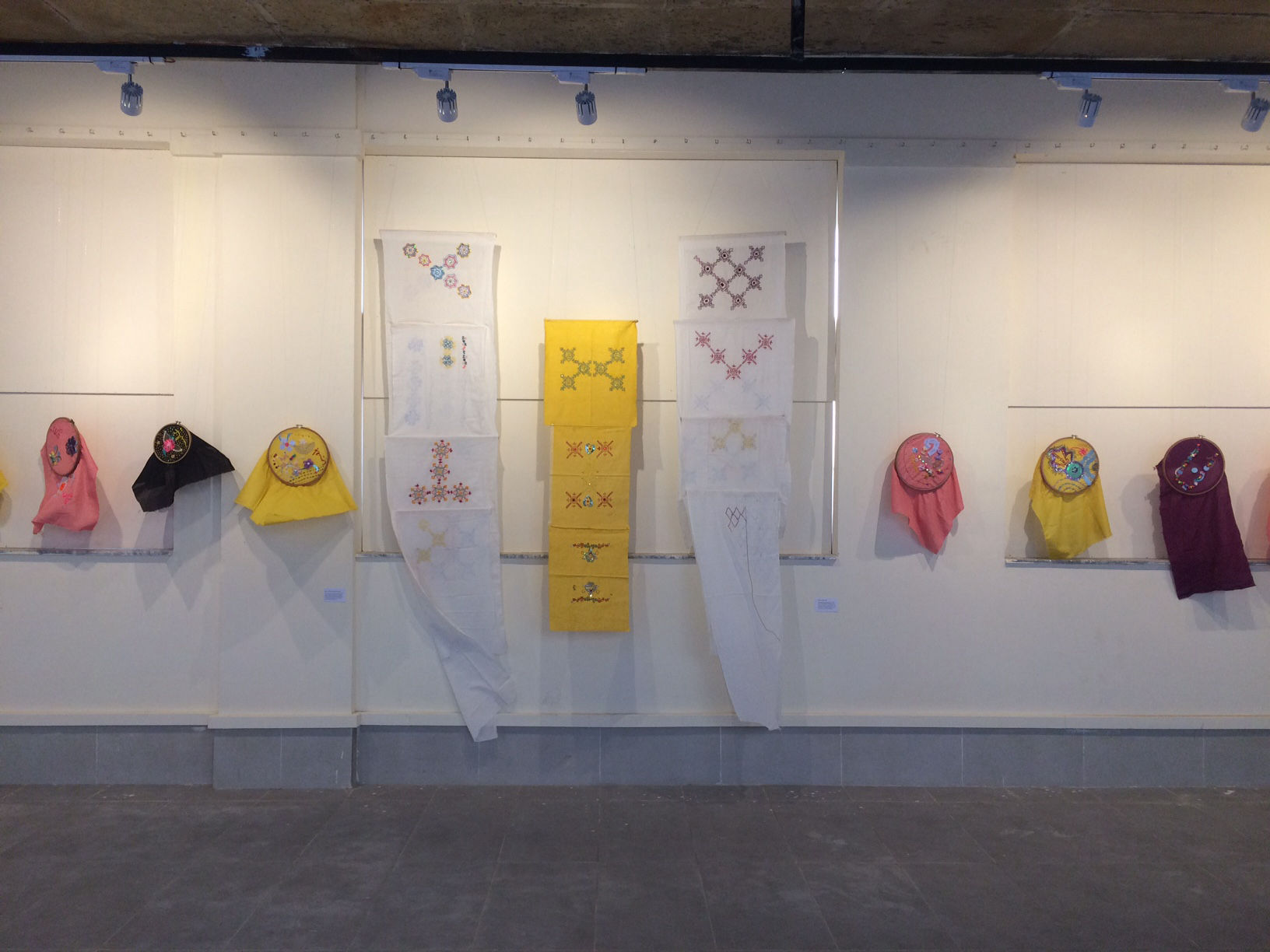
Danish Jabbar
Kaarvan Crafts Foundation was established in 2004 and is incorporated as a Not-for-profit company registered under Section 32 and licensed under Section 42 of Companies Ordinance, 1984 (Companies Act, 2017) in Pakistan. Kaarvan provides life skills to Pakistani Rural Women in order to build their confidence to participate in local decision-making and carving connections with relevant urban markets. With integrated holistic developmental approach that caters to both human dignity and individual integrity — Kaarvan is working towards implementing the Sustainable Development Goal 5 & 8 and creating a collective movement for a culture of peace from a gender perspective enhancing relational capacities through skills development – skills pertaining not only to profession but also communication, critical thinking and conflict transformation.
Working in a space of experimentation around complex issues — Kaarvan is crafting an emergent practice of social innovation that shape-shifts in subversive yet expansive ways. It is devoted to examining the ways in which gender roles and all forms of human inequality are embedded in culture and society. Works to reduce gender difference by providing life skills opportunities to marginalized women living in low-income communities across Pakistan. We are of the firm believe that the representation and participation of women will pave the path for a culture of peace in Pakistan.
Till date Kaarvan has mobilized, trained and capacitated more than 25,000 women in over 1,000 of villages of 22 different districts across Pakistan. Integrating and working within the multidimensional network of stakeholders and connecting institutional silos. With Kaarvan’s Theory of Change revolving around education, enablement and empowerment of women’s economic capacities — Kaarvan places women at the heart of development.
In these unprecedented times of COVID-19 — economy, workflow and life as we know it — asked us to create new rituals, new modes of engagement and to strengthen our humanity by sharing our resources, our time and our energy to support one another from afar.
We received very desperate calls from the women artisans from the marginalized communities in rural areas. Due to Corona Pandemic they have been hard hit economically — many of them being the sole bread earners for their families. As these most vulnerable women artisans reside in far-flung villages, sending rations to them especially in wake of the Corona virus pandemic is a challenge in itself.
For Kaarvan, it is our Top Priority to keep a flow of money transfer to them so that they can buy basic commodities for themselves — as no family should be left behind.
With health precautions and COVID 19 lockdown all of our field activities for women economic empowerment programs and protection of cultural heritage initiatives have to be halted. This pause on projects has had a trickledown effect on the grassroots community as the chain of workflow has been disrupted.
Obstruction of field activities led to innovation – Kaarvan is relentlessly shapeshifting itself to adapt and meet recent COVID-19 challenges and needs of grassroots community. Kaarvan has created remote gathering, field work and to build rural micro-entrepreneurs’ capacity for digital marketing and selling. Kaarvan has developed a three-prong strategy: 1) Initiated Kaarvan Corona Relief Fund sending money to our women artisans from vulnerable households in far flung villages in Center & South Punjab. Sending each family PKR 4,400 per month via digital transfers to as many families as possible – by the grace of God, we managed to reach out with cash support to over 2000 most venerable families in our database of artisans 2) Remote participatory Campaign #BeApartTogether made by and with rural micro-entrepreneurs as they vocalize and showcase how they are bravely facing the challenges of COVID-19 and remotely supporting one another. 3) Remote “Digital Readiness” – constitutes the training & capacity building on the necessary ‘Survival Kit’ for any remote trainings to take place. “Digital Enablement” – this follows the digital readiness & constitutes a range of trainings given to group of micro-entrepreneurs who connect remotely from their mobile phones on platform best suited for the training. “Digital Market Linkages” – Kaarvan Crafts Foundation’s Uraan —Online Exhibition is compilation of all the digital enablement training put to action from design aesthesis, product photography, digital portfolio to communication. It is also medium of promotion, continuation and protection of traditional Pakistani crafts and the craft woman from far flung villages – to be LIVE on Facebook sharing their stories of resilience & Crafts with the world – making customer connections with national and international customers. The idea is to make visible the grassroot point of contact that is the artisan making the craft. Online Exhibition is means of bringing the artisans to the forefront and spread awareness of local crafts through tangible product experience.
As a conscious effort we also engaged young volunteers from leading design school of the country to be part of the online exhibition process. The idea is to sensitize the youth to roots of Pakistani heritage through remote interaction with rural artisans via digital platforms. Having not only the rural artisans preserving the craft but also the youth join hands in this initiative with their social media flair and modern trends.
Prior to the recent undertaking of remote digital enablement, it is Kaarvan’s strategic partnership with The British Asian Trust and Samsung Pakistan that took the latest technology to the grassroots level in a simple and easy way. Through the development of Aanganpk.com, a technology platform created with, by and for rural artisans — digital courtyard where female artisans can upload their crafts —connect with national and international customers through showcasing their products and interacting with them through Android Mobile Devices.






